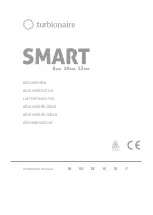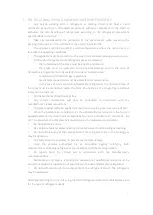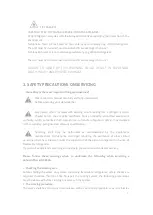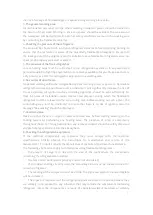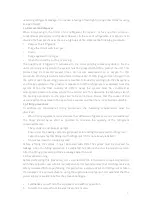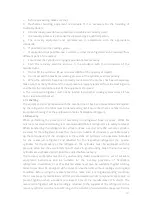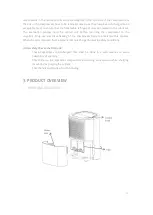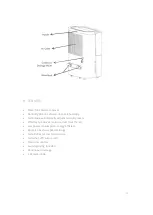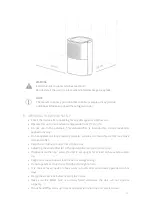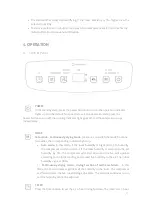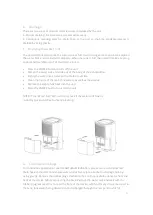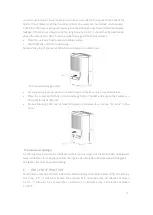
5
C. THE FOLLOWING SHOULD ALWAYS BE OBSERVED FOR SAFETY
•
Any person working with a refrigerant or cooling circuit must hold a valid
certificate issued by an accredited assessment authority competent in the field to
authorize the safe handling of refrigerants according to the recognized assessment
specifications in the field.
•
Take into consideration the protection of the environment when removing the
packing of the unit and the unit itself at the end of its useful life.
•
The appliance must be stored in a well-ventilated area where the room size is in
line with the operating conditions.
•
The appliance must be stored in such a way that mechanical damage cannot occur.
•
Information for spaces where refrigerant pipes are allowed:
-
the installation of the pipes must be kept to a minimum;
-
the pipes must be protected from physical damage and, in the case of
flammable refrigerants, must be installed in a well-ventilated area;
-
compliance with national gas regulations;
-
mechanical connections must be accessible for maintenance;
-
in the case of units containing flammable refrigerants, the minimum area of
the room must be mentioned under the form of a table or of a single figure without
reference to a formula;
•
Ventilation holes should be kept free.
•
Any service intervention will only be performed in accordance with the
manufacturer's recommendations;
•
The pipes connected to an appliance should not contain a potential source of fire;
•
When the portable air conditioner or the dehumidifier is turned on, the fan can
operate permanently under normal conditions to ensure a minimum air volume of 80
m3 / h, even when the compressor is closed due to the temperature controller.
•
Do not perforate or burn.
•
Use only the tools recommended by the manufacturer for defrosting or cleaning
•
Do not perforate any of the components of the refrigerant circuit. The cooling gas
may be odourless.
•
Carefully store the appliance to prevent mechanical damage.
•
Only the persons authorized by an accredited agency certifying their
competencies can handle refrigerants in accordance with the local legislation.
•
All repairs must be carried out in accordance with the manufacturer's
recommendations.
•
Maintenance and repairs requiring the assistance of qualified personnel must be
carried out under the supervision of specialists in the use of flammable refrigerants.
•
Do not perforate any of the components of the refrigerant circuit. The refrigerant
may be odourless.
Additional warnings for the unit using the R290 refrigerant (refer to technical data plate
for the type of refrigerant used).

